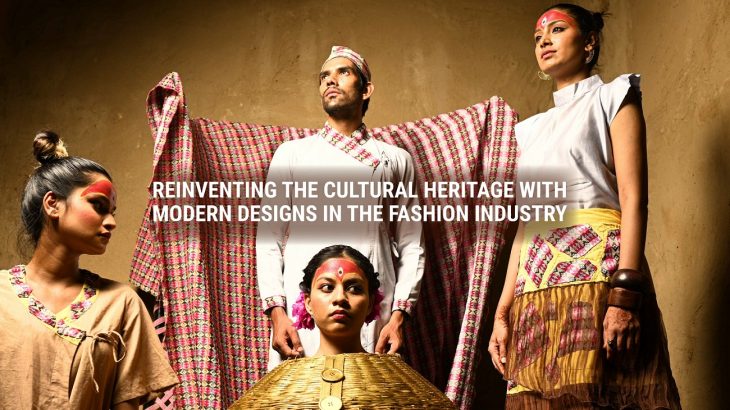Cultural heritage is an integral part of a person’s identity. It cannot be viewed only as yet another fashion trend. It has a deeper, underlying meaning like many other inspirational sources. Heritage and culture stay regardless of fashion trends and times- as a constant inspirational source for designers.
India’s deep-rooted culture and rich heritage are unparalleled. It is impossible to estimate the extent of diversity and inspiration available to designers in each region of the country. When one examines the connections and the relevance of it, she will gain a deeper understanding of how further education can bring the inspirations of heritage into her learning and then her expressions of design and innovation. We, as an Educational Institution, constantly nurture the mindset of students to reinvent and explore the beauty of our heritage to create modern designs by exposing them to conversations with artistic people and to the environments that emphasise the indigenous knowledge systems and its significance and relevance in today’s scenario.
ADVANCED TECHNOLOGIES IN THE FASHION INDUSTRY
Fashion has always been at the forefront of innovation — from the invention of the sewing machine to the rise of e-commerce. Like technology, fashion is forward-looking and cyclical. Today, technology plays an important role in enabling creativity, and young minds have been using technology quite creatively. With limited resources, technology allows for an idea to be visualised and represented. Local or Global inspiration can be well combined with predominant culture and specific context that suits specific business environments.
Due to the fact that fashion and jewellery go hand in hand in complementing the overall look and feel for an occasion, advanced technologies in the fashion industry are playing a big role in creating fusion design clothes and jewellery and playing an important role in advancing both the sectors of apparel and jewellery in using mixed reality and digital software being developed for the purpose.
EACH DESIGN IS A FUSION DESIGN.
Using new materials in a different context is a fusion of a new approach and a new way of thinking. Design is a fusion at large: a fusion of the past and present, a fusion of future-led thinking and the present context.
In the past, food, clothing, and shelter were basic necessities. As we progressed, we’ve realized that these three areas led to another human need of ‘aspirations’ which gets fulfilled through ‘Fashion’. Fashion fosters identity, as well as builds an image for a purpose, so as times change we notice the constant requirement for changing fashion trends, which is useful for innovation and for inspiring young minds to constantly conceive new ways to look at societal issues, image building and their own identity.
INNOVATION IN THE DESIGN EDUCATION SECTOR
Throughout history, design has been a forerunner, setting new standards for learning and teaching. The interdisciplinary and multidisciplinary nature of design allows it to combine the strength of various disciplines and solve complex issues. Thinking for the future in design perspective will require creative thinkers that will use design and aesthetics creatively to solve common problems and grow opportunities for all, going forward.
CONCLUSION:
Fashion has a distinctive life cycle different from other products or services; fashion trends appear cyclically and cultural heritage has been and will always be a great source of inspiration for designers. The extent to which cultural heritage elements are applied on and the motivation behind using them can help strengthen traditions and make cultural heritage elements vividly visible and fashionable, and at the same time century-old customs and indigenous practices can help bring the much needed ‘Sustainability’ and ‘Longevity’ aspects to the entire Fashion Culture of our society.
